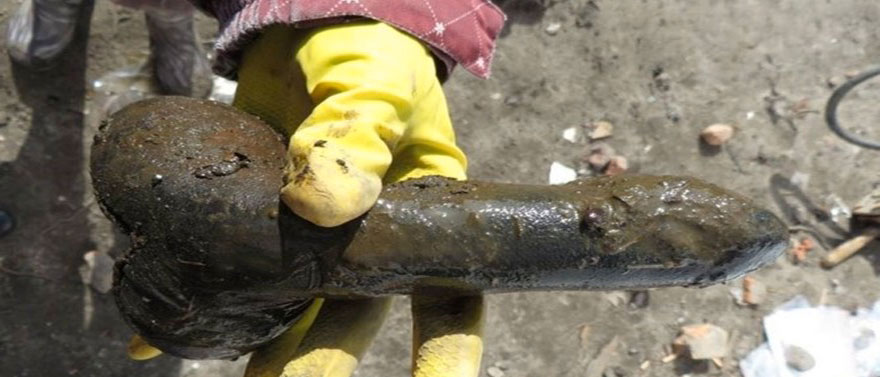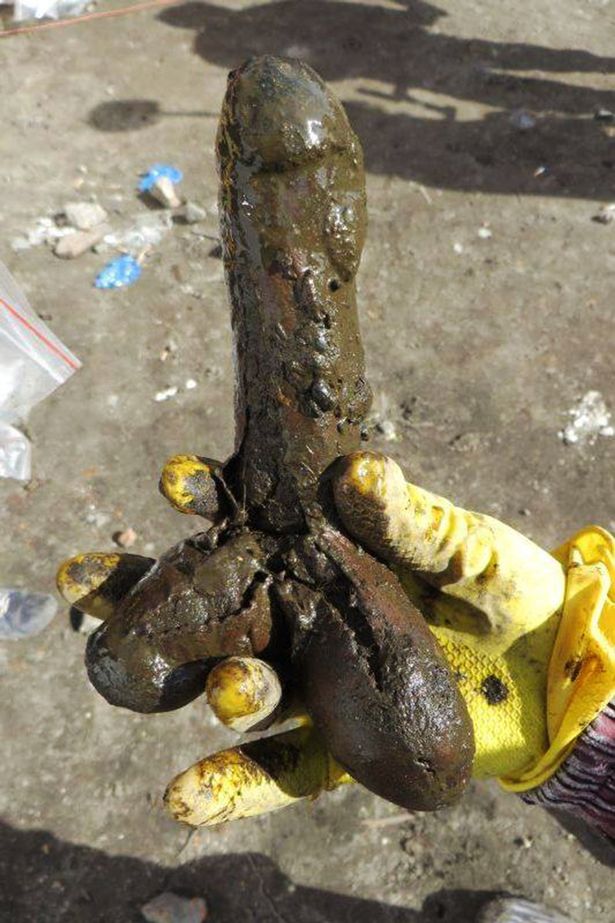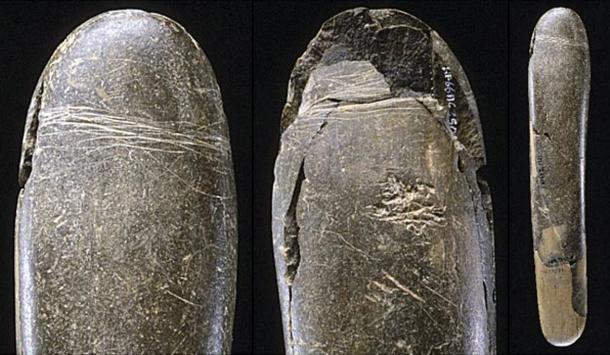One archeologist said: "It is quite thick and rather large, made of leather and filled with bristles... It was probably dropped by someone"
 A 250-year-old sex toy has been found by archaeologists during a dig of an ancient toilet in Poland.
A 250-year-old sex toy has been found by archaeologists during a dig of an ancient toilet in Poland.
The eight-inch leather dildo with a wooden head was discovered during an excavation at an old school of swordsmanship in the coastal city of Gdansk.
A spokesman for the Regional Office for the Protection of Monuments in Gdansk, said: 'It was found in the latrine and dates back to the second half of the 18th century.
 'It is quite thick and rather large, made of leather and filled with bristles, and has a wooden tip that has preserved in excellent condition. It was probably dropped by someone in the toilet.
'It is quite thick and rather large, made of leather and filled with bristles, and has a wooden tip that has preserved in excellent condition. It was probably dropped by someone in the toilet.
'Whether that was by accident or on purpose is anyone's guess though.'
Archaeologists at the site earlier discovered old swords leading them to suspect that the place was once a school of swordsmanship.
The artifact has now been taken away for preservation work.
Dildos have been found in some form throughout history, with Upper Palaeolithic artefacts previously discovered being said to be likely used for sexual pleasure.
For thousands of years, phallic objects have been used symbolically as a means to boost fertility and ward off evil spirits - but their use as sexual aids has a long history, too.
A 28,000-year-old phallus recently found in Germany is quoted as being the oldest known 'sex toy' ever found.
While phalluses made from stone, wood, leather and even camel dung have all be found during excavations, or referenced throughout historical text and images.
And an Austrian museum even has the world's oldest condom on display together with four other condom fragments dated from around 1650.
These were found in a toilet at Dudley Castle in England.
Historical references to the use of sexual aids date back millennia. It is known that both male and female Romans and Greeks used phallic objects for pleasure. In Aristophanes’ anti-war comedy "Lysistrata" (411 BC), which tells of one woman’s mission to end the Peloponnesian war, women discuss using sex toys in order to withhold sex from their husbands in an effort to stop the war.
In the Middle East, historical reports refer to Egyptians using camel dung coated in resin as sexual aids.
In the famous collection of folk tales, "One Thousand and One Arabian Nights," which traces its roots back to ancient and medieval Arabic, Persian, Indian, Egyptian and Mesopotamian folklore and literature, dildos are discussed as being made from gold, silver, or intricately carved ivory.
The Greeks are believed to be the first to use leather or animal intestine to cover a carved penis, adding a more natural feel.
Phallic objects were not just used for sexual pleasure however. In ancient Greece, ‘hysteria’ was believed to be a medical condition caused by a meandering and misbehaving uterus caused by a lack of “hysterical paroxysm” (orgasm). Famous physician Hippocrates believed the condition caused all manner of symptoms, including insomnia, emotional instability, headaches, and general ill health. Women were instructed to use ‘olisbos’ (stone or wood sex toys) to prevent the onset of hysteria.
The belief that women could suffer ‘hysteria’ from a lack of sex continued all the way into the early 20 th century with Medieval and Renaissance physicians carrying out ‘genital massage’ of their patients to cure them of their woes.
Via Daly Mail, Ancient Origins




